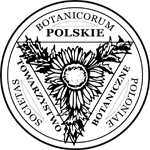Laboratory effect of Boni Protect containing Aureobasidium pullulans (de Bary) Arnoud in the control of some fungal diseases of apple fruit
Abstract
Keywords
Full Text:
PDFReferences
Achbani E.H., Mounir R., El Jaafari S., Douira A., Benbouazza A., Jijakli M.H. 2005. Selection of antagonists against Penicillium expansum and Botrytis cinerea, two post harvest apple parasites. 57th International Symposium on Crop Protection. Commun. Agric. Appl. Biol. Sci. 70 (3): 143–149.
Auwerkerken A., Davey M.W., Van Den Putte A., Keulemans J. 2007. Screening for Botrytis cinerea resistant apple cultivars. Acta Hort. 814: 759–764.
Bencheqroun S.K., Bajji M., Massart S., Bentata F., Labhilili M., Achbani H., El Jaafari S., Jijakli M.H. 2006. Biocontrol of blue mold on apple fruits by Aureobasidium pullulans (strain Ach 1–1): in vitro and in situ evidence for possible involvement of competition for nutrients. Commun. Agric. Appl. Biol. Sci. 71 (3): 1151–1157.
Borecki Z. 1984. Fungicydy stosowane w ochronie roślin. PWN, Warszawa (in Polish).
Chi Z., Wang F., Chi L., Yue L., Liu G., Zhang T. 2009. Bioproducts from Aureobasidium pullulans, biotechnologically important yeast. Appl. Micr. Biotech. 82: 793–804. http://dx.doi.org/10.1007/s00253-009-1882-2
Droby S., Cohen L., Daus A., Weiss B., Horev B., Chalutz E., Katz H., Keren-Tzun M., Shachnai A. 1998. Commercial testing of Aspire: a yeast preparation for the biocontrol of postharvest decays citrus. Biol. Control, 12: 97–101.
El-Ghaout A., Smilanick J., Wisniewski M., Wilson C.L. 2000. Improved control of apple and citrus fruit decay with a combination of Candida saitoana and 2-deoxy-D-glucose. Plant Dis. 84: 249–253.
Falconi C.J., Mendgen K. 1994. Epiphytic fungi on apple leaves and their value for control of the postharvest pathogens Botrytis cinerea, Monilinia fructigena and Penicillium expansum. Z. Pflkrankh. Pflschutz. 101: 38–47.
Ippolito A., Ghaouth A. E., Wilson C. L., Wisniewski M. 2000. Control of postharvest diseases of apple fruit by Aureobasidium pullulans and induction of defense responses. Postharv. Biol. Tec. 19: 265–272.
Leibinger W., Breuker B., Hahn M., Mendgen K. 1997. Control of postharvest pathogens and colonization of the apple surface by antagonistic microorganisms in the field. AGRIS Record, 87 (11): 1103–1110. http://dx.doi.org/10.1094/PHYTO.1997.87.11.1103
Lima G., Ippolito A., Nigro F., Salerno M. 1997. Effectiveness of Aureobasidium pullulans and Candida oleophila against postharvest strawberry rots. Postharv. Biol. Tec. 10: 169–178. http://dx.doi.org/10.1016/S0925-5214(96)01302-6
Lima G., De Curtis F., Castoria R., De Cicco V. 2003. Integrated control of apple post- harvest pathogens and survival of biocontrol yeasts in semi-commercial conditions. Eur. J. Plant Pathol. 109: 341–349.
Mounir R., Durieux A., Bodo E., Allard C., Simon J.P., Achbani E.H., El-Jaafari S., Dounira A., Jijakli M.H. 2007. Production, formulation and antagonistic activity of the biocontrol like-yeast Aureobasidium pullulans against Penicillium expansum. Biotechnol. Lett. 29: 553–559. http://dx.doi.org/10.1007/s10529-006-9269-2
Pouliot J.M., Walton I., Parkhouse M.N., Abu-Lail L.I., and Camesano T.A. 2005. Adhesion of Aureobasidium pullulans is controlled by uronic acid based polymers and pullulan. Biomacromolecules, 6: 1122–1131.
Prasongsuk S., Sullivan R.F., Kuhirun M., Eveleigh D.E., and Punnapayak H. 2005. Thailand habitats as source of pullulan producing strains of Aureobasidium pullulans. World J. Microb. Biot. 21: 393–398. http://dx.doi.org/10.1007/s11274-004-2237-x
Rosslenbroich H.J., Stuebler D. 2000. Botrytis cinerea- history of chemical control and novel fungicides for its management. Crop Prot. 19: 557–561. http://dx.doi.org/10.1016/S0261-2194(00)00072-7
Saravanakumar D., Ciavorella K., Spadaro D., Garibaldi A., Gullino M.L. 2008. Metschnikowia pulcherrima strain MACH1 outcompetes Botrytis cinerea, Alternaria alternata and Penicillium expansum in apples through iron depletion. Postharv. Biol. Tec. 49: 121–128. http://dx.doi.org/10.1016/j.postharvbio.2007.11.006
Scharma R.R., Singh D., Singh R. 2009. Biological control of postharvest diseases of fruits and vegetables. by microbial antagonists; A review. Biol. Control, 50(3): 205–222.
Schena L., Ippolito A., Zahavi T., Cohen L., Nigro F., and Droby S. 1999. Genetic diversity and biocontrol activity of Aureobasidium pullulans isolates against postharvest rots. Postharv. Biol. Tec. 17: 189–199. http://dx.doi.org/10.1016/S0925-5214(99)00036-8
Schena L., Nigro F., Pentimone I., Ligorio A., and Ippolito A. 2003. Control of postharvest rots of sweet cherries and table grapes with endophytic isolates of Aureobasidium pullulans. Postharv. Biol. Tec. 30: 209–220. http://dx.doi.org/10.1016/S0925-5214(03)00111-X
Sugar D., Spotts R.A. 1999. Control of Postharvest Decay in Pear by Four Laboratory- grown Yeasts and Two Registered Biocontrol Products. Plant. Dis. 83 (2): 155–158. http://dx.doi.org/10.1094/PDIS.1999.83.2.155
Takesako K., Ikai, K., Haruna F., Endo M., Shimanaka K., Sono E., Nakamura T., Kato I., and Yamaguchi H. 1991. Aureobasidins, new antifungal antibiotics. Taxonomy, fermentation, isolation and properties. J. Antibiot. 44: 919–924. http://dx.doi.org/10.7164/antibiotics.44.919
Vero S., Mondino P., Burgueno J., Soubes M., Wiśniewski M. 2002. Characterization of biocontrol activity of two yeast strains from Uruguay against blue mold of apple. Postharv. Biol. Tec. 26: 91–98. http://dx.doi.org/10.1016/S0925-5214(01)00199-5
Wagner A., Kordowska-Wiater M., Hetman B. 2006. Wpływ wybranych szczepów drożdży na rozwój szarej pleśni na owocach jabłoni. / Effect of selected yeast strains on grey mold development in apple fruits. Prog. Plant Prot. 46(2): 625–628 (in Polish).
Vinas I., Usall J., Teixido N., Sanchis V. 1998. Biological control of major postharvest pathogens on apple with Candida sake. Int. J. Food Microbiol. 40: 9–16.
Zhang A., Spadaro D., Garibaldi A., Gullino M.L. 2010a. Efficacy of antagonist Aureobasidium pullulans PL5 against postharvest pathogens of peach, apple and plum and its mode of action. Biol. Control, 54(3): 172–180. http://dx.doi.org/10.1016/j.biocontrol.2010.05.003
Zhang A., Spadaro D., Garibaldi A., Gullino M.L. 2010b. Selection and evaluation of new antagonists for their efficacy against postharvest diseases of peaches. Postharv. Biol. Tec. 55: 174–181.
DOI: https://doi.org/10.5586/aa.2013.009
|
|
|






